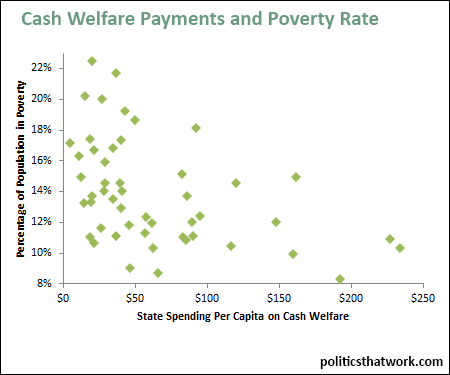
Description: This graph shows the relationship between the amount states spend on cash welfare programs per capita and the poverty rate. Cash welfare payments include state contributions to SSI, TANF and Medicare and also various state programs that provide cash benefits to people in poverty. The amount spent is per resident of the state, not per recipient.
Sources: Census Census
Data: Excel
Last updated: October 4, 2015





